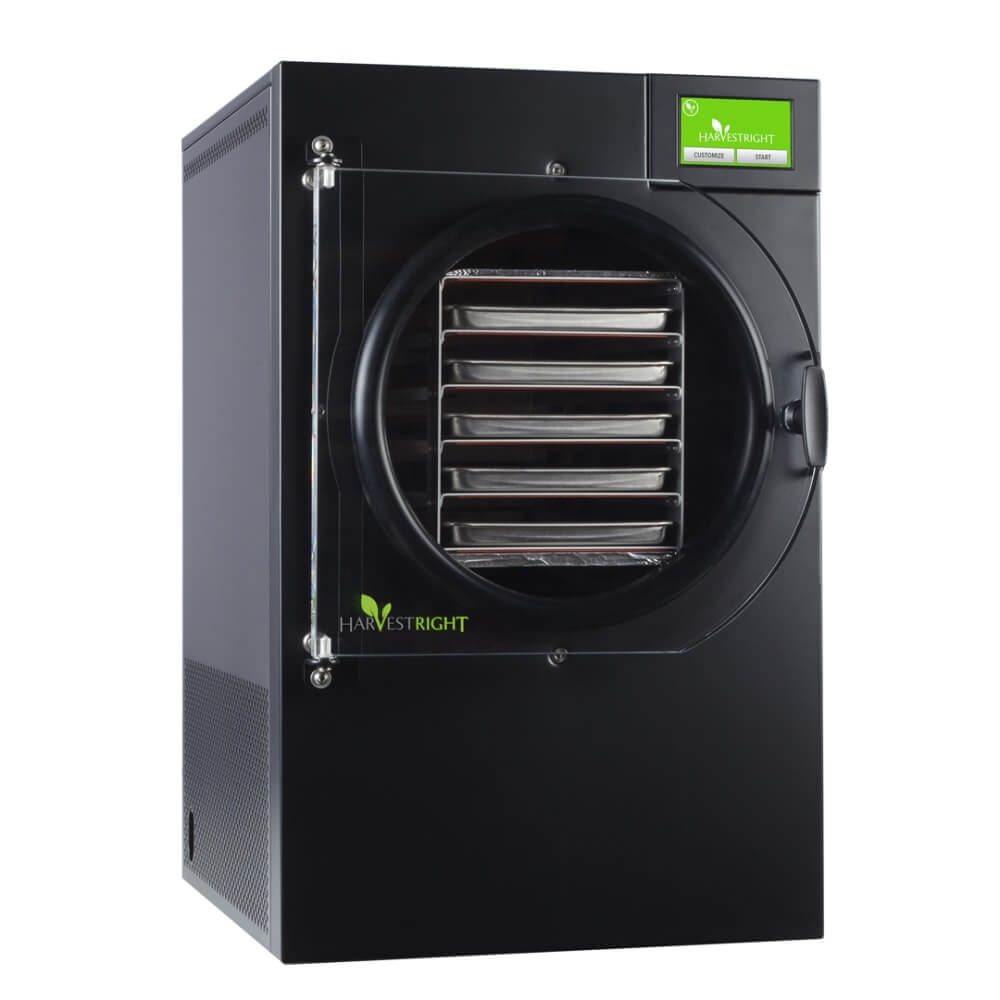Have you ever opened your fridge to find a sad, wilted bunch of spinach you forgot about? Yeah, me too. It’s moments like these that got me thinking about food preservation.
Let me tell you, diving into the world of freeze-dried and dehydrated foods has been a game-changer for my kitchen (and my wallet)!
In this article, we’re gonna chat about:
- What the heck freeze-drying and dehydrating actually are
- How these methods stack up nutrition-wise
- The taste test – because let’s face it, if it doesn’t taste good, why bother?
- How much these preservation methods might set you back
- Which foods work best for each method
- The environmental impact – because we all wanna do our part, right?
So, grab a snack (freeze-dried or not), and let’s dive in!
What’s the Deal with Freeze-Drying and Dehydrating?
Okay, so picture this: you’ve got a juicy strawberry. Now, imagine sucking all the water out of it without turning it into a shriveled mess. That’s basically what we’re doing here, folks.
Freeze-Drying: The Space-Age Snack Maker

Freeze-drying is like something out of a sci-fi movie. Here’s how it goes down:
- Freeze the food (duh)
- Create a vacuum around it
- Slowly add heat to make the ice turn directly into vapor
It’s called sublimation, and it’s pretty darn cool. The first time I tried freeze-drying at home, I felt like a mad scientist.
My kitchen looked like a lab, and I may have cackled a bit when I pulled out my first batch of freeze-dried blueberries. They were <u>so light</u>, I thought they might float away!
Dehydrating: The OG of Food Preservation

Now, dehydrating is the old-school cousin of freeze-drying. It’s been around since our ancestors figured out that food lasts longer when it’s dry. Here’s the lowdown:
- Slice up your food
- Spread it out on trays
- Blast it with warm air until it’s dry
My first attempt at dehydrating wasn’t quite as dramatic as freeze-drying, but it was satisfying in its own way.
The smell of apples and cinnamon filling my kitchen as I made my first batch of apple chips? chef’s kiss
Nutrition Showdown: Who’s the Healthiest of Them All?
Alright, let’s talk nutrients. Because if we’re going through all this trouble, we want our food to be healthy, right?
Freeze-drying is the nutrition champ here. It keeps up to 97% of the original nutrients intact. That’s because the process is gentle – no high heat to destroy those delicate vitamins.
Dehydrating is no slouch either, keeping about 60-80% of nutrients. But the heat can be a bit rough on some vitamins, especially C and some B vitamins.
I learned this the hard way when I tried to live off only dehydrated veggies for a week. Let’s just say my energy levels weren’t great, and I may have gotten a bit… uh… backed up. Lesson learned: variety is key, folks!
The Taste Test: Crispy vs Chewy
Now for the fun part – how do these preservation methods stack up in the flavor department?
Freeze-dried foods have this weird (but cool) melt-in-your-mouth texture. They start out crispy, then rehydrate as you eat them. It’s like a texture adventure in your mouth! The flavor is usually pretty spot-on to the original food, just more concentrated.
Dehydrated foods, on the other hand, are chewier. Think raisins vs grapes. The flavor gets concentrated too, which can be amazing or overwhelming, depending on the food.
I once made the mistake of popping a whole freeze-dried jalapeno in my mouth. Let me tell you, that concentrated spice was NO JOKE. I danced around my kitchen, fanning my mouth and probably looking like a cartoon character. Learn from my mistakes, people!
Show Me the Money: The Cost of Preservation
Alright, let’s talk turkey – or rather, the cost of preserving that turkey.
Freeze-dryers are not cheap, my friends. We’re talking anywhere from $2,000 to $5,000 for a home unit. When I first saw those prices, I nearly choked on my freeze-dried ice cream (yes, that’s a thing, and it’s awesome).
Dehydrators, on the other hand, are much more budget-friendly. You can snag a decent one for as little as $50, with fancy models going up to about $300.
But here’s the thing – it’s not just about the upfront cost. Freeze-dryers are energy hogs. The first time I ran mine, I swear I could see my electric meter spinning like a carnival ride. Dehydrators use way less energy, which is easier on both your wallet and the planet.
What Can You Actually Make?
So, what kind of culinary adventures can you embark on with these gadgets?
Freeze-dryers are like the overachievers of the food preservation world. You can freeze-dry just about anything:
- Fruits and veggies
- Meats and fish
- Dairy products
- Entire meals
- Even ice cream!
I once freeze-dried a whole lasagna. It was… interesting. Rehydrated pretty well, though!
Dehydrators are great for:
- Fruit leathers
- Veggie chips
- Jerky
- Herbs and spices
My dehydrator and I have a special bond. It’s been my partner in creating some killer spice mixes and the world’s tangiest lemon powder. Pro tip: dehydrated lemon zest will make your taste buds do a happy dance!
Green Eating: The Environmental Impact
Let’s get real about Mother Earth for a sec. In our era of climate consciousness, it’s important to think about how our kitchen habits affect the planet.
Freeze-dryers, with their energy-guzzling ways, aren’t exactly eco-warriors. But they do have a secret weapon: less food waste. Because freeze-dried foods last so long, you’re less likely to throw food away.
Dehydrators use less energy, which is a plus. But if dehydrated foods spoil faster and lead to more waste, this advantage could be a wash.
Both methods can help reduce packaging waste, especially if you’re preserving your own garden harvest. No more plastic-wrapped produce from the store!
I’ve definitely noticed a difference in my trash output since I started preserving food. It feels good to know I’m doing my part, even if it’s small.
So, What’s It Gonna Be?
Whew! We’ve covered a lot of ground, haven’t we? So, how do you choose between a freeze dryer and a dehydrator?
If you’re just dipping your toes into food preservation, start with a dehydrator. They’re cheaper, easier to use, and still pretty versatile. Plus, there’s something satisfying about making your own sun-dried tomatoes (without the sun).
If you’re serious about long-term food storage, have the budget for it, and don’t mind the learning curve, a freeze dryer could be your new best friend. The superior nutrient retention and longer shelf life are hard to beat.
Remember, there’s no rule saying you can’t have both! I started with a dehydrator and added a freeze dryer to my kitchen arsenal years later. Now my pantry looks like a prepper’s dream, and I always have healthy snacks on hand.
Whatever you choose, you’re taking a step towards reducing food waste, eating healthier, and becoming more self-sufficient. And let me tell you, there’s nothing quite like the feeling of opening your pantry and seeing jars of colorful, homemade preserved foods. It’s like a edible rainbow of accomplishment!
So, are you ready to join the food preservation party? Whether you’re team crispy (freeze-dried) or team chewy (dehydrated), remember – the best preserved food is the one you’ll actually eat. Now go forth and preserve, my friends! Your taste buds, your wallet, and the planet will thank you.



